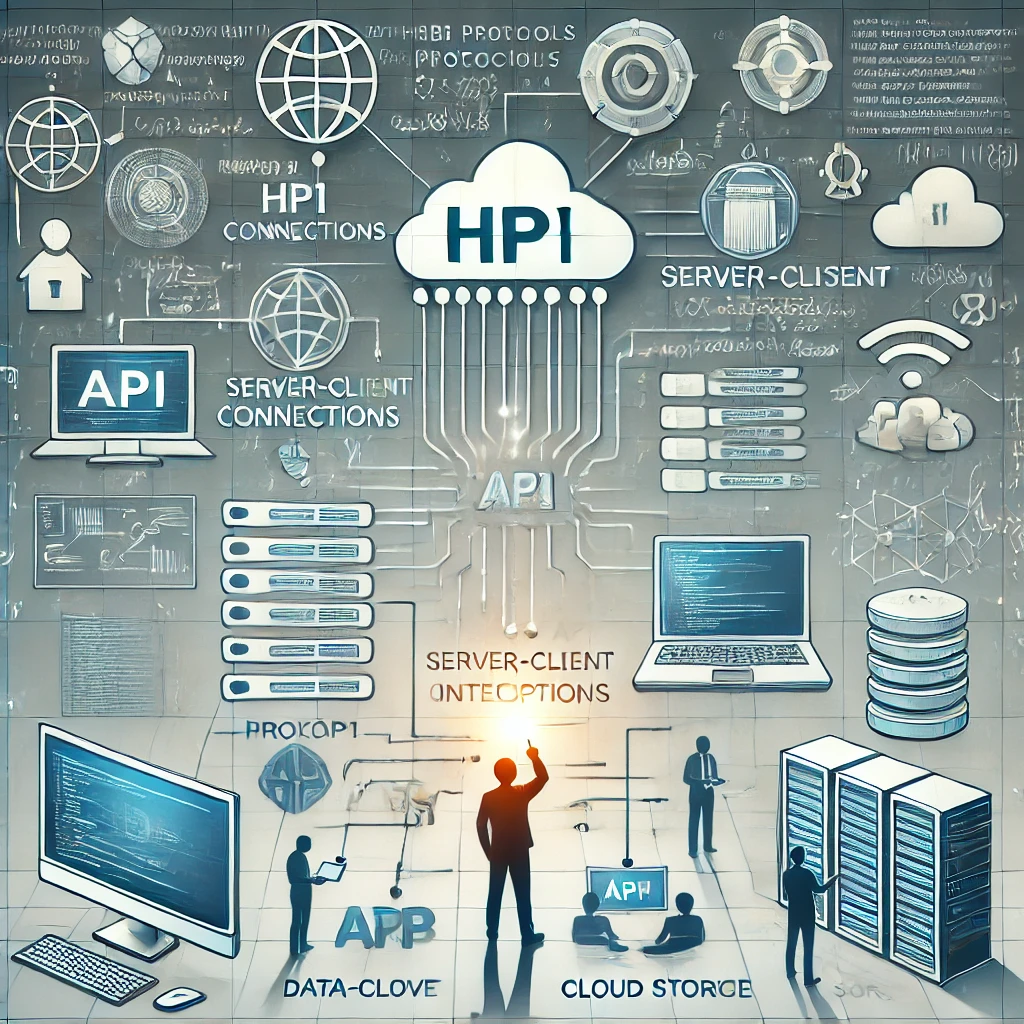The CS-52 programming course is designed to take students from foundational programming principles to advanced concepts, equipping them with the skills needed to solve complex problems in software development. This overview covers the course’s core objectives, the tools utilized throughout the curriculum, and the prerequisites necessary to succeed. Each module progressively builds on the last, creating a clear pathway for mastering essential programming concepts.
Course Objective, Tools, and Prerequisites
The primary objective of the CS-52 course is to establish a solid programming foundation while also introducing advanced topics that enable students to write efficient, modular, and scalable code. By the end of this course, students should be able to understand and implement both basic and advanced data structures, work with complex algorithms, and apply object-oriented principles in a structured, modular way.
Tools: Students will use popular Integrated Development Environments (IDEs) such as Visual Studio Code and PyCharm to write and debug code. In addition, Git and GitHub will be incorporated to manage version control and collaborate on projects, simulating real-world software development practices.
Prerequisites: Although designed for those relatively new to programming, students should have a basic understanding of computer operation, logic, and mathematics. Familiarity with elementary math concepts, such as algebra and basic calculus, will assist with the logical and algorithmic aspects of the course.
1. Introduction to Programming
The introductory module lays the groundwork for understanding how code works, the structure of basic programs, and how to interact with data. Students learn core programming concepts such as syntax, variables, and Input/Output (I/O), and how these elements form the building blocks of more complex logic.
- Basic Syntax, Variables, and I/O: Students start by understanding the syntax rules of programming languages used in the course (e.g., Python or JavaScript), focusing on how to declare variables, assign data types, and manage input and output operations. Learning syntax is essential for developing clean, readable, and error-free code.
- Development Tools (IDEs, Git): This section introduces Integrated Development Environments (IDEs) like Visual Studio Code, which supports editing, running, and debugging code. Students are also introduced to Git for version control, learning how to track changes, revert to previous versions, and collaborate on code.
2. Data Structures & Algorithms
Data structures and algorithms are the backbone of effective programming, allowing students to store, organize, and manipulate data efficiently. In this module, students begin to explore core data structures and sorting/searching algorithms to optimize code performance.
- Arrays and Lists: Students learn the fundamentals of arrays and lists, which are sequential data structures. They gain an understanding of indexing, appending, and removing elements, along with the limitations and strengths of each structure.
- Sorting and Searching Algorithms: Sorting and searching techniques such as Bubble Sort, Merge Sort, and Binary Search are introduced, teaching students the importance of order and retrieval efficiency within data structures.
- Big O Notation: Big O Notation is crucial for understanding algorithmic efficiency. Students learn how to evaluate time and space complexity to ensure their solutions are not only correct but also optimized for performance.
3. Object-Oriented Programming (OOP)
This module covers Object-Oriented Programming, a paradigm that models real-world entities as code. OOP is essential for creating modular, reusable code structures, and is a key concept for scaling software development projects.
- Classes and Objects: Students are introduced to the principles of classes and objects, the basic units of OOP. They learn how to define classes to encapsulate data and behavior, creating objects as instances of these classes.
- Inheritance and Polymorphism: These concepts help streamline code and reduce redundancy by allowing new classes to inherit properties from existing ones. Polymorphism enables flexible code structures, where functions can process objects differently based on their data types or class hierarchies.
4. Advanced Data Structures
Moving beyond basics, students dive into advanced data structures that solve specific, complex problems and are widely used in fields like database management and networking.
- Linked Lists: Unlike arrays, linked lists offer dynamic memory allocation, allowing elements to be added or removed more efficiently. Students learn to implement and use both singly and doubly linked lists.
- Trees and Graphs: Trees, particularly binary trees, are explored for organizing hierarchical data, while graphs are introduced to handle relational data in areas like social networks or navigation systems.
- Hash Tables: Hash tables provide efficient data retrieval by mapping keys to values. Students learn how hashing works and the importance of avoiding collisions to ensure fast data access.
5. Functions & Modularity
This module emphasizes the importance of organizing code into reusable, manageable units, which improves readability, debugging, and overall code quality.
- Functions and Recursion: Students learn to break down complex tasks into smaller functions, with recursion providing a method for solving problems through repeated function calls.
- Scope and Modular Code: Students learn about variable scope, which determines the accessibility of variables within different parts of a program, ensuring data security and efficiency. Modular code is emphasized to promote organized, well-structured programs that are easy to understand and maintain.
6. File I/O & Data Persistence
Data persistence is a vital concept, allowing programs to save and retrieve information even after the program has closed. This module teaches students how to read from and write to files, use serialization techniques, and interact with databases to store data for long-term access.
- Reading/Writing Files: Students learn how to work with files by reading data from and writing data to text and binary files. This includes handling exceptions to prevent runtime errors and ensuring file security and integrity.
- Serialization: Serialization is introduced as a method of converting complex data structures, such as dictionaries and objects, into a format that can be easily saved and later reconstructed. Students learn to serialize data into common formats like JSON and XML.
- Databases (Optional): For students interested in database management, this section covers basic database operations, including creating and querying tables, as well as using SQL for relational databases. Learning databases helps students understand how large-scale applications manage and retrieve persistent data.
7. Web Development / Networking (Optional)
In today’s tech landscape, web development and networking are crucial skills, even for entry-level developers. This optional module provides a foundational overview of how the web functions, along with basic server-client interactions and web application development.
- HTTP and APIs: Students are introduced to the Hypertext Transfer Protocol (HTTP) and Application Programming Interfaces (APIs). These allow programs to interact with web services and retrieve data from other applications, such as weather or social media data.
- Frameworks (Flask or Spring): Basic web frameworks like Flask (for Python) or Spring (for Java) are explored. Students build simple web applications to understand how server-side programming works and how applications interact with clients over the web.
- Sockets: For a deeper understanding of networking, students learn about socket programming, allowing real-time communication between applications. This includes client-server connections for tasks like live chat applications or multiplayer games.
8. Debugging & Testing
Writing code is only part of software development; testing and debugging are equally essential. This module introduces techniques and tools that help identify and resolve issues, ensuring the final software is robust, reliable, and user-friendly.
- Debugging Tools: Students become familiar with debugging tools available in IDEs, such as breakpoints, step-by-step execution, and variable watches. These help trace issues in the code and pinpoint errors effectively.
- Unit Testing: Unit testing is a method of testing individual components of a program to ensure they perform as expected. Students learn to write test cases that validate the correctness of functions and catch errors early in the development process.
- Test-Driven Development (TDD): TDD is a software development process where tests are written before the code itself. Students practice writing tests that outline the program requirements, coding to meet these tests, and refactoring to improve code quality.
9. Software Engineering Practices
Professional software development requires not only coding skills but also familiarity with version control, agile methodologies, and deployment practices. This module covers these essential industry-standard practices.
- Git and Version Control: Building on previous lessons, students dive deeper into Git, learning how to handle branching, merging, and pull requests. They also practice resolving conflicts and managing contributions in collaborative projects.
- Agile Methodology: Agile principles, such as iterative development, sprints, and daily stand-ups, are introduced to provide an understanding of modern software development workflows. Agile practices are critical for maintaining flexibility and responsiveness to change.
- Continuous Integration/Continuous Deployment (CI/CD): CI/CD pipelines are fundamental in delivering reliable software updates. Students learn how to set up automated testing and deployment pipelines to ensure smooth and error-free releases in a production environment.
10. Capstone Project & Final Presentation
The capstone project serves as a culminating experience, allowing students to apply the knowledge and skills gained throughout the course. Working in teams, students simulate a full development process from planning to deployment, presenting their work to demonstrate their proficiency.
- Team Projects: Students collaborate to plan, design, and develop a complete software solution. They follow a structured development process, learning to divide tasks, track progress, and work as a cohesive team.
- Development Process: Emphasis is placed on project planning, version control, and iterative development. Students conduct code reviews, write documentation, and test extensively to ensure the software meets specifications.
- Presentations: Each team presents their project to the class, explaining their design decisions, challenges faced, and solutions implemented. This experience reinforces their understanding and boosts confidence in presenting technical information.
Assessment Criteria
The CS-52 course assessment is designed to evaluate students’ knowledge, skills, and ability to apply programming concepts in practical scenarios. Performance is measured through assignments, a midterm examination, a final project, and active participation.
- Assignments: Regular assignments allow students to practice new concepts in a structured way. These help reinforce learning and provide feedback on individual progress.
- Midterm: The midterm exam tests students on core concepts covered in the first half of the course, ensuring a strong foundation for more advanced topics in the second half.
- Final Project: The capstone project serves as the final assessment, measuring students’ ability to apply their knowledge to a real-world project, work in teams, and create a functional software application.
- Participation: Active participation in class discussions, peer code reviews, and group activities contributes to overall assessment, fostering an engaging learning environment.
Conclusion
The CS-52 programming course provides a structured, comprehensive path for beginners and intermediate programmers to deepen their understanding of coding, data structures, algorithms, and software engineering practices. Through a mix of theoretical and hands-on learning, students gain the technical and collaborative skills necessary to excel in software development. By the end of the course, they are well-prepared for more advanced studies or entry-level roles in software engineering, armed with both practical knowledge and a solid understanding of programming principles.
FAQs for CS-52 Programming Software Course
1. What is the main goal of the CS-52 programming course?
The primary goal of the CS-52 programming course is to build a comprehensive foundation in programming principles, data structures, algorithms, and software engineering practices. The course prepares students to handle real-world software challenges by focusing on both theoretical knowledge and practical application.
2. Do I need any prior experience to join this course?
While prior experience in programming is helpful, it’s not strictly necessary. However, students should have a basic understanding of logic, mathematics (including algebra), and familiarity with computer operation. A willingness to learn and engage with new concepts is also essential for success.
3. What programming languages are covered in the course?
The course focuses on programming languages widely used in software development, such as Python and JavaScript. The exact language(s) may vary based on the instructor’s approach, but the course content is structured to be adaptable to most major languages.
4. Which tools and development environments will we use?
Students will use popular Integrated Development Environments (IDEs) like Visual Studio Code or PyCharm for writing and debugging code. Git will be used for version control, and GitHub will assist with collaborative coding and project management. Optional tools include Flask or Spring for web development.
5. Are data structures and algorithms covered in-depth?
Yes, data structures and algorithms are core components of the course. Students will explore basic structures (like arrays and lists) and more advanced structures (such as trees, graphs, and hash tables). Key sorting and searching algorithms, as well as Big O Notation for measuring algorithm efficiency, are also covered.
6. Will we learn about Object-Oriented Programming (OOP)?
Absolutely! Object-Oriented Programming (OOP) is a major focus of the course. Students learn about classes, objects, inheritance, and polymorphism, which are fundamental for creating modular, scalable, and reusable code.
7. Is web development included in the course?
Web development is offered as an optional module. It introduces students to web basics like HTTP, APIs, and basic server frameworks (e.g., Flask for Python or Spring for Java). This module helps students understand web interactions and basic client-server communication.











Leave a Reply